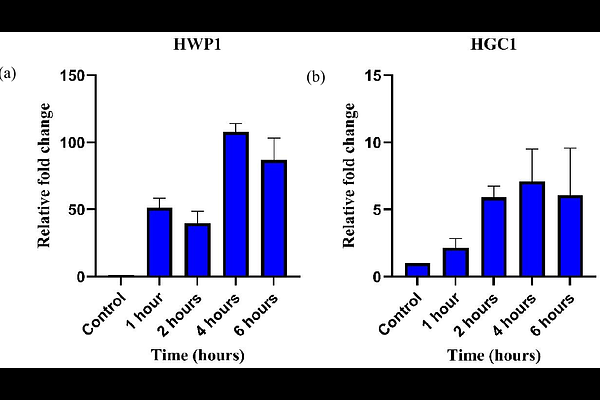Hyphal induction in Candida albicans: Optimizing medium parameters to accelerate hyphal growth enhanced by GlcNAc

Hyphal induction in Candida albicans: Optimizing medium parameters to accelerate hyphal growth enhanced by GlcNAc
A, R.; PV, A.; J, A. B.; Chakraborty, U.; Raval, R.
AbstractHyphal formation is a critical virulence trait in Candida species, contributing significantly to host tissue invasion, immune evasion, and disease progression. The morphological transition from yeast to hyphal form is therefore a key target for antifungal intervention. However, conventional hyphal induction media are often complex, expensive, and poorly standardized. In this study, we developed a simplified and cost-effective medium (MF8) containing peptone (0.16%), dextrose (0.4%), and bovine serum albumin (BSA; 0.25%), which supported moderate hyphal growth under nutrient-limited conditions. The addition of N-acetylglucosamine (GlcNAc) markedly enhanced filamentation. Using a Design of Experiments (DOE) approach via JMP software, we evaluated the effects of GlcNAc and magnesium sulfate (MgSO4) on hyphal induction. GlcNAc was identified as a significant enhancer (p < 0.05; R{superscript 2} = 0.26), while MgSO4 had no significant impact (p > 0.05). Under optimized conditions (30 mM GlcNAc, 1 mM MgSO4), RT-qPCR analysis revealed strong upregulation of HWP1 (100-fold at 4 h; 85-fold at 6 h) and HGC1 (>6-fold; p < 0.05). A concurrent pH shift from alkaline to acidic during 1-6 hours correlated with hyphal induction and gene activation, suggesting that acidification may serve as an additional cue regulating morphogenesis.